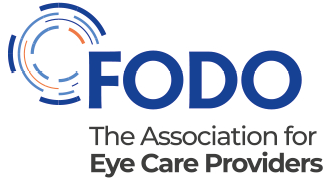April to June 2020
If you are struggling to navigate out of the lockdown, do not worry, you are not alone.
The pandemic is a complex issue and made more complicated by the fact all UK governments have used different language, key tests, and priorities to describe how they plan to ease restrictions locally.
To help you navigate out of the lockdown, we provide a summary of each plan below, including what these have in common, what it means for eye care and a more general overview of each national strategic plan.
- What the plans have in common
- What it means for eye care
- More detail - an overview of each national strategy
You can also access further guidance and support using our Covid-19 resource hub.
Each country in the UK might have its own strategy for easing lockdown restrictions, but there are some important and common themes.
Coronavirus is not a short-term crisis.
All UK governments are clear, Coronavirus is not a short-term crisis but a long-term challenge.
As a society we need to follow all standard infection control procedures for some time to come. This includes social distancing, best practice hand and respiratory hygiene, and official self-isolation guidance. In eye care these procedures will be enhanced and include PPE and other protocols to manage Covid-19 risks.
No fixed route to the 'next normal'
The infection rate (R) is at the heart of risk management strategies and all UK governments will be monitoring the "R rate" closely. The R for example, in part, explains why each UK country is easing restrictions at different times. You can learn more about R here.
R data will therefore be used to help inform when restrictions can be eased and whether new restrictions need to be put in place. That means we could see delays in implementing the phased reopening of society and the economy, or see some services open only to be asked to temporarily close again.
In addition to this, R estimates are based on modelling assumptions and as testing and tracing improve it should be possible to have more localised estimates of R. We could therefore see more localised planning in the months and years ahead – with some services allowed to open in some parts of the country but not others.
That is why there is no fixed timeline back to the 'new normal'. It is also why in our framework for primary eye care providers we support members to plan a dynamic response to Covid-19 related risks using a RAG model.
One step at a time
All UK government strategies explain a phased approach which can be broadly be summarised as:
- Plan – a framework setting out a route map to a new normal
- Assess and review – as time progresses data will be reviewed and if safe to do so, the journey along the route map will continue. These reviews will typically take place on a three-weekly cycle, or sooner if necessary
- Act – if at any time new evidence emerges or the R value suggests there could be an exponential spread of the virus, urgent actions to mitigate a full lockdown will be considered.
They do this because, as explained above, it is not possible to know what impact each phase of reopening will have on R.
To simplify further, all UK plans for easing the lockdown include the same goal: to slowly 'reopen society' and assess the impact each stage has on the spread of the virus:
- If R is stable and other tests set by each UK government are met (see below for country specific information), then we will continue along the path to easing other restrictions in that country.
- If R increases and the government needs to control this, further restrictions are possible. This might happen nationwide or at a more local level
- If R fluctuates, we might have a 'yo-yo' effect.
In all scenarios the optimal strategy for primary eye care providers would be to have clear plans in place based on the local Covid-19 risk stratification approach, this is set out for each UK country below.
Although all UK countries have now issued their national strategies for easing lockdown, each country has shared different detail on the impact this might have on eye care services. We include a summary of the current position for each country below. We will keep this resource up to date throughout the pandemic and update you via member newsletter updates when there are changes.
On the 17 June NHS England and NHS Improvement supported the full resumption of routine GOS. Read more.
- You can find the guidance and support you need by visiting our Covid-19 resource hub.
- Read the the College of Optometrists' RAG table so that you can plan eye care throughout the pandemic.
You might also find the following government guides helpful in terms of planning services locally.
- Shops and branches - including essential premises that are currently open (updated 25 May)
- 5 steps to working safely - practical actions for all businesses to take
- Office and contact centres - offices and contact centres.
On the 17 June the HSC Board confirmed that phase 1 of the re-establishment of ophthalmic services would take place on Monday 29 June.
Phase 1 includes the main elements of routine eye care, including eye examinations and ophthalmic dispensing and the provision of Enhanced Services. It does not include domiciliary eyecare provision. In addition, in order that GOS patients most in need are prioritised, it is anticipated that in Phase 1 routine eyecare will be available for those patients presenting with ocular symptoms, visual needs or medical needs, with “routine reminder” generated activity recommencing at Phase 2. This is to give practices an opportunity to manage demand with respect to anticipated capacity challenges due to social distancing and infection prevention control measures whilst ensuring that citizens most in need are prioritised.
Since 29 June services have gradually been restored. College of Optometrists Covid-19 guidelines now also support a more localised response to clinical priority setting based on the current Covid-19 threat level.
- Read the the College of Optometrists' RAG table so that you can plan eye care throughout the pandemic. You can also find other useful guidance and support by visiting our Covid-19 resource hub
On 18 June the Scottish Government confirmed the country would take a staged process to implementing Phase 2 of its Covid-19 response.
Community optometry practices would re-open for face-to-face emergency and essential eye care as part of the NHS Mobilisation Plan. Optical practices can reopen for emergency and essential care under Phase 2 from Monday 29 June. Read PCA(0)2020(10).
In Phase 3 all community optometry will re-open with social distancing safeguards.
You can find all that you need to prepare at our Covid-19 resource hub. You can also read the latest version of our framework for primary eye care which will help you to plan-ahead throughout the pandemic.Since 29 June services have gradually been restored. College of Optometrists Covid-19 guidelines now also support a more localised response to clinical priority setting based on the current Covid-19 threat level.
You might also find the following government guides helpful in terms of planning services locally
- Covid-19 retail sector guidance - guidance for the retail sector including procedures for staff and customer safety and an operations checklist
The Welsh Government has confirmed (19 June) that the country is moving to the Amber phase of the pandemic and that non-essential retail can reopen in Wales from 22 June.
Optometry Wales confirmed that practices, subject to completing a self-assessment form, can start to follow optometry recovery guidance (Amber phase): Covid-19 from 20 June.
Domiciliary services remain suspended and can only be accessed through the local Domiciliary Eye Care Service (DECS) already arranged by Health Boards.
Read the 19 June letter from the Welsh Government.
Since 19 June services have gradually been restored. College of Optometrists Covid-19 guidelines now also support a more localised response to clinical priority setting based on the current Covid-19 threat level.
You can find all that you need to prepare at our Covid-19 resource hub. You can also read the latest version of our framework for primary eye care which will help you to plan-ahead throughout the pandemic.You might also find the following helpful:
You can access the full documentation or read FODO's summary below:
Fully strategic documents:
- England: Our plan to rebuild: The UK Government's Covid-19 recovery strategy - published 11 May
- Northern Ireland: Coronavirus - Executive approach to decision-making - published 12 May
- Scotland: Covid-19 - Framework for decision making. Scotland's route map through and out of the crisis - published 21 May
- Wales: Unlocking our society and economy: continuing the conversation - published 15 May
FODO's summary:
Although there are common themes across all UK plans on easing the lockdown, there are also important differences and yet to be confirmed details. For example:
- Each country will use different tests to determine when to progress to the next phase of pandemic planning. In England, the government will continue to use the five tests it has since the start of the lockdown period, whereas Scotland will use the World Health Organization's six criteria at some but not all transition points, Northern Ireland (NI) will use a modified version of the WHO criteria and Wales its own model.
- England, NI, Scotland and Wales describe their route out of lockdown differently. In England there are three phases and we are entering phase 2 and likely to remain in this phase until there is a treatment or vaccination for Covid-19 – within phase two there is a plan to restart society based on the five tests being met. In NI there are five steps out of lockdown, in Scotland there are five phases (Phase 0 to Phase 4), and in Wales a traffic light model has been adapted and applied to different sectors.
- There is currently a lack of clarity on who will make use of the independent UK Joint Biosecurity Centre – responsible for developing and maintaining a pan UK Covid-19 alert system. The new centre was announced by the UK Government on 1 May and is now certain to inform the decision-making process in both England and Wales. It is less clear if NI will use the same alert system and in its 21 May plan the Scottish government said it might "decide to make use of the assessments made by the Joint Biosecurity Centre that was recently announced by the UK Government to inform moving between phases. Scottish Ministers will retain decision-making over any formal movement between levels for Scotland and the associated package of responses required in moving to a new level"
These differences can be particularly challenging for members that provide eye care in different part of the UK, for example the Scottish framework acknowledges that people travelling to other parts of the UK will have to follow local guidance:
- "the rate of infection may be different in different parts of the UK, our route map should be considered alongside local public health and safety requirements for England, Wales and Northern Ireland. If people in the future are travelling to other parts of the UK then they should follow the relevant guidance in place."
So, if you would like to talk to a member of the FODO team about any national strategy and what it means for you as a FODO member, then please email [email protected] and we will arrange a tailored session to discuss your specific planning needs. In the meantime, we include an overview of each national plan below.
Our plan to rebuild: The UK Government's Covid-19 recovery strategy, published 1 May, is based on enacting measures that have the largest effect on controlling the epidemic but the lowest health, economic and social costs. It will take account of the health, economic and societal impacts of Covid-19 and follow five principles: science, fairness, proportionality, privacy and transparency.
The strategy signalled moving from phase one – during which the focus was to contain, delay, research and mitigate – to phase two which focuses on 'smarter controls'. For example, backed by a strategy to expand testing and tracing, the government hopes to take a more localised approach to "stop hotspots developing by detecting infection outbreaks at a more localised level and rapidly intervening with targeted measures."
As we move through phase two, the government has reiterated that "people will need to minimise the spread of the disease through continuing good hygiene practices: hand washing, social distancing and regular disinfecting of surfaces touched by others". It added, "these will be in place for some time" and that the "virus is unlikely to die out spontaneously; nor is it likely to be eradicated".
The government plans gradually to lift restrictions in small steps within phase two, only proceeding to each stage if it is safe to do so, which will be determined by applying its longstanding five tests
- Protect the NHS's ability to cope. Must be confident that the NHS can provide sufficient critical care and specialist treatment right across the UK.
- See a sustained and consistent fall in the daily death rates from COVID-19.
- Reliable data from SAGE showing that the rate of infection is decreasing to manageable levels across the board.
- Be confident that the range of operational challenges, including testing capacity and PPE, are in hand, with supply able to meet future demand.
- Be confident that any adjustments to current measures will not risk a second peak of infections that overwhelms the NHS (see section 1.2).
A new UK Joint Biosecurity Centre (JBC) will be responsible for setting new Covid-19 Alert levels to communicate the level of risk to the public:
- Level 1: Covid-19 is not known to be present in the UK
- Level 2: Covid-19 is present in the UK, but the number of cases and transmission is low
- Level 3: Covid-19 epidemic is in general circulation
- Level 4: Covid-19 epidemic is in general circulation; transmission is high or rising exponentially
- Level 5: As level 4 and there is a material risk of healthcare services being overwhelmed.
This will remain in place until there is a reliable treatment in phase three.
Read the latest version of our framework for primary eye care which will help you to plan-ahead throughout the pandemic.Coronavirus - Executive approach to decision-making, published 12 May, sets out how the five party Executive will:
- "led by the science and not by a calendar setting artificial deadlines"
- base decisions on medical and scientific advice
- need to make decisions based on judgements that balance the continued need to control the spread of infection, with the impacts the restrictions are having on health, well-being, the economy and the way of life.
It will base decisions on whether a specific restriction or requirement should be retained, withdrawn or modified on five guiding principles:
- Controlling transmission. The key metric is the reproduction number 'R'. A restriction or requirement should only be relaxed when there is a reasonable prospect of maintaining R at or below 1.
- Protecting healthcare capacity. The healthcare system should have sufficient capacity to treat Coronavirus patients while phasing in the reintroduction of usual health and care services. The system should not be allowed to be overwhelmed by a second or subsequent wave of the pandemic.
- Necessity. A specific restriction or requirement should be retained only as long as it is considered necessary to prevent, protect against, control, or provide a public health response to the incidence or spread of Coronavirus.
- Proportionality. The detrimental impacts on health, society and the economy that can reasonably be attributed to the restriction or requirement should be tolerated only as long as the risks associated with withdrawal or modification are assessed to be more severe.
- Reliance on evidence. Proposals for change or for the retention of a restriction or requirement should be informed by the best available evidence and analysis.
These are similar to the WHO's six criteria (which the Scottish government has also adapted).
There will be a staged approach to relaxing restrictions. This will include
- Taking a dynamic approach - i.e. the Executive will continue to review and refine its approach in response to evidence and not set specific dates, stating such dates "give an artificial sense of certainty about the future."
It sets out a roadmap in its document for different aspects of life, each with five steps. For example:
- Transport. Step 1 public transport restricted with additional PPE for staff not until Step 5 that we would likely see a full service, even here subject to risk assessment and promoting alternatives - e.g. walking/cycling
- Retail. Only food and other permitted retail activities allowed during lockdown, in Step 1 large outdoor retailers permitted to open, in Step 2 non-food retail subject to safeguards, Step 4 would, on a limited basis to start with, see hairdressers open again based on risk mitigation and Step 5 would see hospitality retail (restaurants, cafes, pubs) open subject to risk assessment.
The document also sets out the potential impact on jobs:
- "baseline scenario modelled by EY estimates that 78,000 jobs could be lost over the year, with 175,000 furloughed or lost at the peak of the crisis (Q2). If the outbreak is prolonged, then EY forecast 132,000 jobs could be lost over the year and 257,000 furloughed or lost at the peak of the crisis (expected to be Q3 if prolonged);"
- Ulster University Economic Policy Centre has estimated that the unemployment rate could reach 6%.
Read the latest version of our framework for primary eye care which will help you to plan-ahead throughout the pandemic.
On Thursday 21 May, the Sottish government published Scotland's route map through and out of the crisis.
Rt Hon Nicola Sturgeon MSP, First Minister of Scotland said:
- "We can't live this way forever. We all want to get back to some semblance of normality - whether that's seeing our friends and family, getting back to work or school, or just being able to spend our free time in the way we want to."
- "We know the lockdown is doing harm of its own. It is causing loneliness and social isolation, deepening inequalities and damaging the economy. None of us want it to last any longer than it has to."
The framework sets out the steps Scotland will take to get to the new normal and promises more specific guidance for key sectors of the economy "which will allow employers and employees to work together and prepare for starting work again".
Scotland will adapt a test, protect, isolate and support system which it is calling a test and protect model. It has many similarities to Phase 2 of the 1 May UK Government plan in which the strategy is referred to as "smarter controls".
The government opts to "draw on WHO, European, UK, Scottish and wider international expertise" to learn and respond to the virus and as such decides that after moving on from the first phase, "future phases will be based on meeting particular criteria, including those set by the World Health Organization (WHO)."
The plan will be to review progress on a three-weekly cycle as a minimum, deciding whether to then "accelerate or need to decelerate elements within each phase."
Helpfully the framework demonstrates a clear desire to provide advance notice so that sectors can plan ahead as much as possible:- "Our steps will be careful, gradual and incremental. Businesses, public services and the third sector will need time to plan and to prepare workplaces, processes, supply chains and logistics in order to introduce any changes safely and effectively."
If more localised controls are required the government also confirms this will be done in consultation:
- "Within Scotland, we are keeping an open mind on the potential for regional variation as we move through the phases of the route map, if that best meets the particular circumstances and needs of the geographies concerned. We would engage with the local communities concerned before taking any geographically differentiated approach to changing restrictions."
The route map along the five phases will start on 28 May if current tests are met at the time.
There will also be a phased reintroduction of all eye care services, with all community optometry reopen with social distancing safeguards in phase three.The annexes of the plan include more specific details on eye care - see summary for eye care specific information above.
Read the latest version of our framework for primary eye care which will help you to plan-ahead throughout the pandemic.
The Welsh government Unlocking our society and economy: continuing the conversation on 15 May.
Like all UK countries it urges everybody to "realise that this is not a short-term crisis. Until there is a vaccine or effective treatments, we will have to live with the disease in our society and to try to control its spread and mitigate its effect".
It more closely aligns with the UK Government's 1 May 'Our Plan to Rebuild: The UK Government's COVID-19 Recovery Strategy' – for example confirming it will use data from the UK Joint Biosecurity Centre and the five Covid-19 alert levels to inform decision making.
It goes on to state it has:
- "Always strongly supported a four-nation approach to the lifting of the lockdown. But this has to respect the responsibilities of each Government to determine the speed at which it is safe to move and the balance to be struck between different forms of ‘easement'. With limited ‘headroom' to ease the current restrictions, choices need to be made and we want to make those choices in consultation with our stakeholders and the people of Wales. That is why we are publishing this document, not as the final word, but as part of a continuing conversation."
- "We also need to use the next few weeks to do all we can to adapt our workplaces, our public spaces and other places where we come in contact with each other to the necessity of maintaining social distancing."
Wales adapted a traffic light system to signal the Covid-19 threat and against that sets out examples of what might be possible across different parts of normal life, whether meeting family and friends, healthcare provision or retail.
There are four levels:
- Lockdown
- Red
- Amber
- Green
How these are likely to apply to eye care are noted in the section above.
Read the latest version of our framework for primary eye care which will help you to plan-ahead throughout the pandemic.


 Patients and public
Patients and public
 Policymakers
Policymakers Members
Members News and views
News and views

